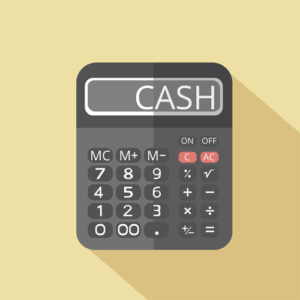Content

In accounting software, using the account number may be a more rapid way to post to an account, and allows accounts to be presented in numeric order rather than alphabetic order. Most importantly, it provides you with a clear picture of the financial health of your company. This is useful not just for business owners, but also investors and shareholders who may not have a handle on your company’s day-to-day operations. It also makes it easier for businesses to comply with financial reporting standards, which makes a chart of accounts extremely beneficial for businesses of all sizes. How you map cost of revenue and operating expenses in your chart of accounts impacts your gross margin and gross profit.
I could see the light bulbs going on as I showed him how his sales invoice lines were all configured to flow to a single sales account in his chart of accounts. With such a simplistic account structure, his financials were unable to provide detail about his five distinct revenue streams. Recently, I was helping a technology company owner improve his financial reporting.
The Income Statement Accounts
Accounts to handle expenses for events are fine, but accounts for the 2017 charity fundraiser might not be a good idea. That’s why a chart of accounts can be a beneficial addition to your financial analytics tools. Explore the definition of a chart of accounts and find out why a chart of accounts is important with our comprehensive guide.

Initially keeping the number of accounts to a minimum has the advantage of making the accounting system simple. Starting with a small number of accounts, as certain accounts acquired significant balances they would be split into smaller, more specific accounts. However, following this strategy makes it more difficult to generate consistent historical comparisons. In this respect, there is an advantage in organizing the chart of accounts with a higher initial level of detail. You can think of this like a rolodex of accounts that the bookkeeper and the accounting software can use to record transactions, make reports, and prepare financial statements throughout the year. In that case, you’d credit the cash asset account, since cash is leaving your business, and debit your expense account for rent. Alternatively, if you’re using accounting software, it’ll know which accounts to credit and debit.
Understand What Your Business Owes
A separate term for the aggregation of expenses and losses does not exist. The profit and loss statement needs to be simplified very considerably. Larger companies with several divisions or locations need more complex charts of accounts than smaller ones.
- The number system for each liability account can start from 2000 and use a sequence that is easy to follow and compare in different accounting periods.
- The document is a real life profit & Loss Statement produced for a club.
- Your business’s chart of accounts provides a snapshot of your company’s financial standing.
- It provides a way to categorize all of the financial transactions that a company conducted during a specific accounting period.
Well, this should be listed between the cash and accounts receivable in the chart, but there isn’t a number in between them. They represent what’s left of the business after you subtract all your company’s liabilities from its assets. They basically measure how valuable the company is to its owner or shareholders.
Liabilities – These accounts are used to track what the business owes such as Suppliers to be paid and Outstanding Debt. The type of Business a company is in and the type of transactions that take place in the Business. Overhead Costs, or Expenses, are fixed costs you have even if you run out of work. PQR Enterprises is a firm engaged in the manufacturing of plastic containers. Given below is the company’s categorization of accounts under the COA. Intangible AssetsIntangible Assets are the identifiable assets which do not have a physical existence, i.e., you can’t touch them, like goodwill, patents, copyrights, & franchise etc. They are considered as long-term or long-living assets as the Company utilizes them for over a year.
2 Chart Of Accounts
Small businesses use the https://www.bookstime.com/ to organize all the complex details of their company finances into an accessible format. It’s the first step you’ll take to set up your business’s accounting system. The chart of accounts clearly separates your earnings, expenditures, assets and liabilities to give an accurate overview of how your business is performing financially. A chart of accounts is a tool that lists all the accounts in the general ledger with unique numbering to help locate them in the relevant accounting book. Stakeholders can refer to the COA and balance sheet, and income statement to find the source of expense and earnings. For example, balance sheets are typically used for asset and liability accounts, while income statements are used for expense accounts. Each of the accounts in the chart of accounts corresponds to the two main financial statements, i.e., the balance sheet and income statement.
A clean chart of accounts is crucial for proper analysis of your P&L statements and balance sheets. But it’s not always easy to tell whether or not your general ledger is well organized. Learn 4 keys to building the best chart of accounts structure for a growing business. This could mean adding several hundred accounts to your chart of accounts. Define the last balance sheet account as the account for year-to-date net income or loss. Balance sheet accounts must precede income statement accounts. For example, if revenues begin at 5000, define object 4999 as the net income account.
What Are The Five Types Of Accounts?
In addition, periodically review the account list to see if any accounts contain relatively immaterial amounts. Can have an account number of just three digits like “118”, where the first digit signifies the account type . Since 1 is the code for assets, 118 belongs to the asset class. Within each category, line items will distinguish the specific accounts.
- For organizational elegance, keep numbers and descriptions consistent.
- Your financial statement will provide details of the cash flow (i.e., credit and debit balance).
- To enter account numbers in a format other than the standard JD Edwards EnterpriseOne format, you must use the prefix character that is defined in general accounting constants.
- Indirect costing applies to project-oriented companies, particularly manufacturers and construction contractors.
- You can clean up your general ledger by taking the single account approach to department tagging as long as you have a software solution that can automate the process and help you slice the data as needed.
- This can be further divided into operating expenses, operating revenues, nonoperating expenses and nonoperating revenues.
- To do this, she would first add the new account—“Plaster”—to the chart of accounts.
A Chart of Accounts for each business, will consist of accounts for income, expenditure, assets, liabilities and ownership equity. These accounts are standardised and used on a regular basis and it is not a good idea to keep making additional accounts whenever it is difficult to categorise. Every account has a balance based on additions and subtractions made since it was opened . So summaries or totals of balances of various types or groups of accounts are often included when displaying a chart of accounts.
Consider Separate Accounts For Key Month
A business bank account (e.g., checking) is an example of an asset. Your COA breaks down your business’s transactions into five main accounts and as many sub-accounts as you need for budgeting and tax purposes.
- So when your business earns money, record the transactions in your income accounts.
- Accounts are usually listed in order of their appearance in the financial statements, starting with the balance sheet and continuing with the income statement.
- “I don’t think I’ve ever looked at that,” he told me as we looked over his accounts.
- This account excludes meals for student athletes while traveling for sporting events.70104Recruiting Expenses – Domestic AdmissionsExpenses incurred by Enrollment only for the recruitment of students.
- Regardless of the sub-accounts you use, a COA can help you stay organized, keeping your accounting books clear and understandable.
It’s inevitable that you will need to add accounts to your chart in the future, but don’t drastically change the numbering structure and total number of accounts in the future. A big change will make it difficult to compare accounting record between these years.
Furthermore, you may decide to structure your chart of accounts so that revenue and expenses is categorised according to business function, product line, or company division. Doing the hard work of setting your accounts up correctly makes calculating margin by product or service line easy. The simplified example PnL below shows what happens when you setup your chart of accounts the wrong way versus the right way. In the wrong way, the company overstates margin because it records all labor to Payroll Expense , and it’s not able to compare consulting margin to software margin. If your chart of accounts is right, you’ll know your true margin and be able to compare your products or services to one another.
Take the wrong approach and you might end up positioning your company poorly for investors or setting far-too-aggressive financial goals. The chart of accounts you create for your business will act as the foundation for all your financial recordkeeping, so it’s a crucial document for your business. Because the chart of accounts organizes all the data related to your business’s finances, it’s a useful tool for quickly and easily creating financial statements. Chart Of AccountsA chart of accounts lists all the general ledger accounts that an organization uses to organize its financial transactions systematically.
The system calculates the net income amount on your balance sheet. The Chart of Accounts is one of those unknown parts of your accounting software we don’t even think about. In this ultimate guide, not only do we explore examples of a common chart of accounts but also we discuss best practices on how to properly set up your chart of accounts. Now that you know chart of accounts definition, it’s time to see how it works.
If you want to learn accounting with a dash of humor and fun, check out our video course. If you are new to accounting the next thing I would read about would be an Introduction to Bookkeeping. The following numbering system would be similar to that of a small to mid sized business. Each Main category begins with a certain number, and then the sub-categories within that Main category will all begin with the same number.
Make Changes To Your Ledger Accounts
Free Financial Modeling Guide A Complete Guide to Financial Modeling This resource is designed to be the best free guide to financial modeling! The offers that appear in this table are from partnerships from which Investopedia receives compensation. Investopedia does not include all offers available in the marketplace.
No Comments